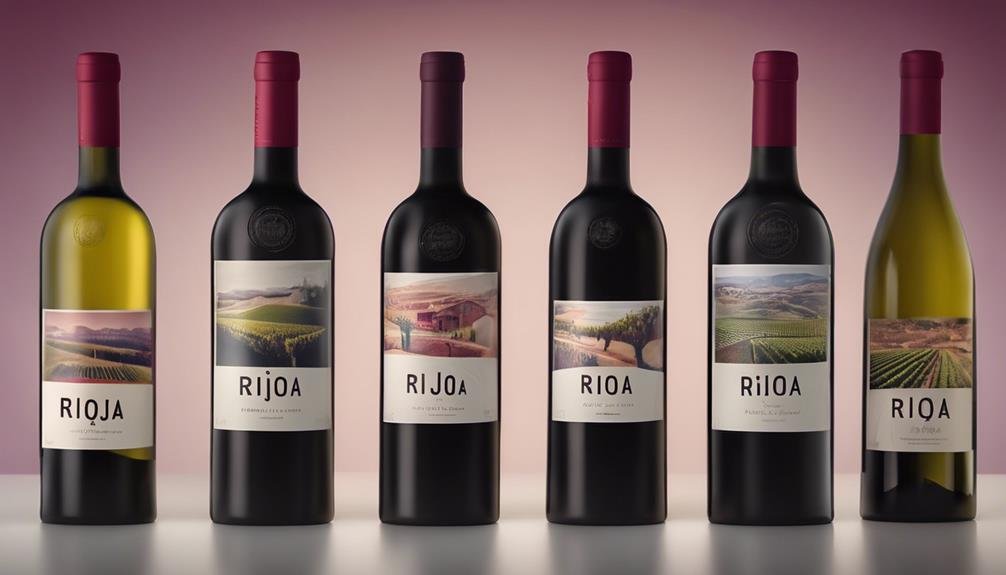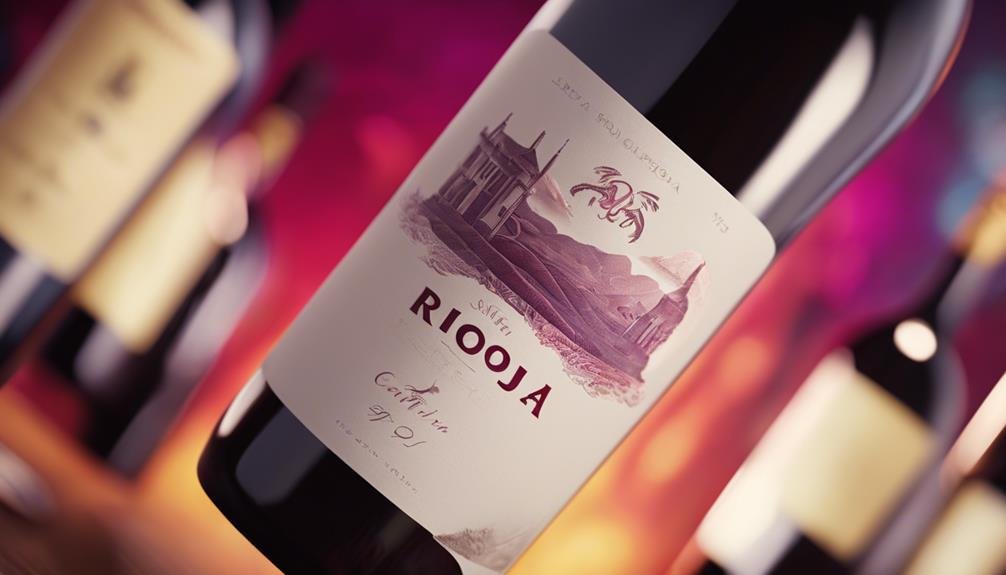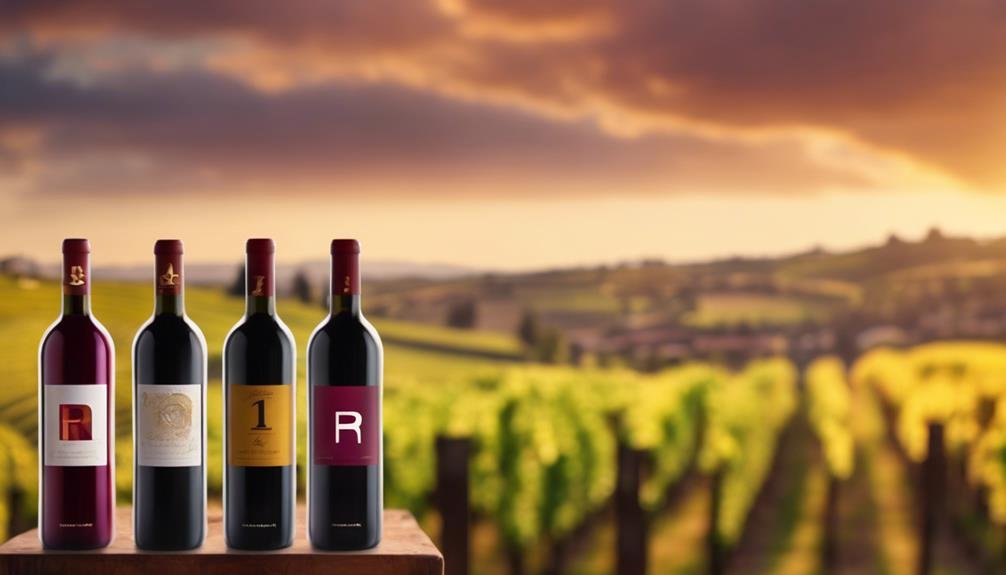The revamped Rioja wine classifications have sparked excitement in the industry. They focus on regional microclimates, showcasing terroir-driven expressions. With wines like Joven, Crianza, and Reserva, the aging classifications offer diverse options. The new labeling system promotes transparency by including village names and enhancing consumer education. The introduction of Viñedo Singular highlights exceptional vineyards, elevating wine quality. Future trends in Rioja include sustainability, unique blends, and modern winemaking techniques. These changes are reshaping the Rioja wine landscape, enticing enthusiasts with a new era of quality and innovation.
Implications of Regional Focus
With the shift towards emphasizing regional microclimates and vineyard sites in Rioja wine classification, a new era of nuanced terroir-driven expressions is emerging in the winemaking traditions of this renowned Spanish wine region.
Regional diversity plays a pivotal role in shaping the characteristics of Rioja wines, highlighting the unique influences of different vineyard sites within the subzones of Rioja Alta, Rioja Alavesa, and Rioja Oriental.
Vineyard influence is becoming increasingly significant, with producers recognizing the impact of specific terroirs on grape quality and wine style. By acknowledging and celebrating these regional distinctions, Rioja is evolving towards a more precise and authentic representation of its diverse viticultural landscape, offering wine enthusiasts a deeper understanding and appreciation of the rich tapestry of flavors that define this historic wine region.
Evolution of Aging Classifications
The evolution of aging classifications in Rioja wines reflects a strategic shift towards enhancing quality and showcasing the diverse aging potentials of different wine styles. This transformation brings increased complexity and highlights the aging potential of Rioja wines. To illustrate this evolution:
- Generic Rioja (Joven) wines introduce consumers to fresh and fruity expressions without aging requirements.
- Crianza Rioja wines offer a step up in complexity, balancing fruitiness with subtle oak notes through increased aging.
- Reserva Rioja wines provide a bridge to aged flavors, displaying elegance and maturity from extended aging periods.
These changes not only cater to diverse consumer preferences but also elevate Rioja's reputation as a region capable of producing wines with exceptional aging potential and complexity.
Impact of New Labeling System

Enhancing transparency and promoting terroir-focused expressions, Rioja's new labeling system ushers in an era of wine classification refinement. This updated system not only provides consumers with a clearer understanding of the origin and characteristics of Rioja wines but also enhances marketing opportunities for producers.
By allowing village and municipality names on labels, consumers can now easily identify the specific region where the grapes were grown, fostering consumer education and appreciation for the diverse terroirs within Rioja. The introduction of Viñedo Singular further adds to the system's depth, recognizing unique vineyards and encouraging the production of single-vineyard wines.
This shift towards site-specificity not only benefits consumers seeking distinct flavors but also elevates Rioja's reputation for quality and authenticity.
Significance of Viñedo Singular
Recognizing the importance of Viñedo Singular in Rioja's wine classification system underscores a significant shift towards highlighting unique vineyard expressions and promoting site-specificity in winemaking practices.
Here are three key aspects to ponder regarding Viñedo Singular:
- Unique Vineyards: Viñedo Singular allows for the identification and recognition of exceptional vineyard sites that showcase distinct terroir characteristics.
- Quality Recognition: By highlighting specific vineyards on labels, consumers can better understand the origin and quality of the wine they are purchasing, fostering transparency and trust.
- Promoting Excellence: Encouraging the production of single-vineyard wines under the Viñedo Singular designation drives winemakers to focus on showcasing the unique attributes of individual vineyard plots, ultimately elevating the overall quality of Rioja wines.
Future Trends in Rioja Wine

With evolving consumer preferences and a growing emphasis on sustainability, Rioja winemakers are exploring innovative techniques to meet the demands of the future wine market.
The emerging market trends in Rioja wine include a focus on sustainability practices such as organic and biodynamic farming methods. Winemakers are also experimenting with unique grape blends, fermentation processes, and aging methods to create distinctive flavors.
In response to changing consumer tastes, there is a growing interest in producing lighter and fresher styles of Rioja wines, including rosés and sparkling wines. Additionally, the use of modern technology in winemaking, such as temperature-controlled fermentation and aging in different types of oak barrels, is becoming more prevalent.
These innovative winemaking techniques aim to elevate the quality and diversity of Rioja wines, appealing to a broader range of wine enthusiasts.
Frequently Asked Questions
How Will the New Regional Focus in Rioja Affect the Taste of the Wines?
The new regional focus in Rioja will greatly impact the taste of wines. By emphasizing regional influence, Rioja wines will showcase unique terroir characteristics, leading to diverse flavor profiles that reflect the microclimates and vineyard sites of the region.
Are There Any Specific Vineyards That Have Already Been Designated as Viñedo Singular?
In Rioja, vineyard exclusivity gains prestige through Viñedo Singular designation, honoring unique terroir. Producers seek this prestigious recognition for specific vineyards. While numerous sites may earn this title, each represents a move towards site-specificity, inspiring positive change in Rioja.
Will the New Labeling System Help Consumers Better Understand Rioja Wines?
The new Rioja wine labeling system enhances consumer education by offering clarity on regional origins, vineyard specifics, and aging classifications. It empowers buyers to make informed choices, fostering a deeper understanding and appreciation of Rioja wines.
How Might the Viñedo Singular Designation Impact the Pricing of Rioja Wines?
The Viñedo Singular designation in Rioja could potentially elevate pricing due to increased market demand for unique, site-specific wines. Recognition of special vineyards adds exclusivity and quality perception, likely influencing consumer willingness to pay premium prices.
What New Winemaking Techniques Might Be Adopted in Rioja Due to These Changes?
Innovative winemaking techniques in Rioja may include biodynamic farming, concrete egg fermentation, and extended skin contact. Sustainability practices like dry farming and native yeast fermentation could also be adopted. These methods symbolize a shift towards quality-driven, environmentally conscious production.
Conclusion
To sum up, the revamped Rioja wine classifications offer an invigorating glimpse into the region's dedication to quality and innovation. With a focus on regional microclimates, updated aging classifications, and new labeling systems, Rioja wines are set to captivate wine enthusiasts worldwide.
The future of Rioja wine promises a journey filled with diverse offerings, enhanced consumer experiences, and a continued evolution towards heightened appreciation and enjoyment. Cheers to the exciting evolution of Rioja wines!
